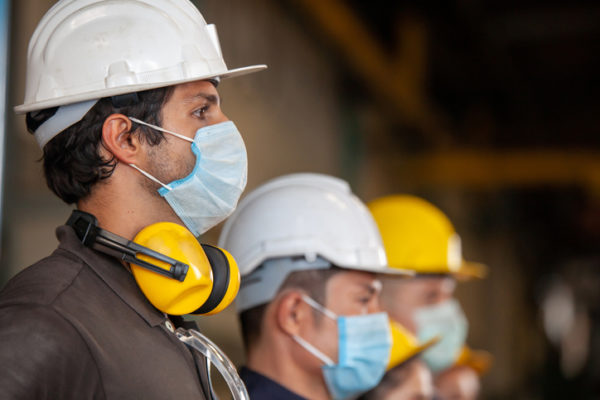According to the CDC and White House guidelines, schools and universities may, in some cases, commence reopening this Fall as part of a phased approach to reopening the economy.
Across the country, school officials are weighing multiple considerations as they make plans regarding whether to reopen and how. For those who are making the decision or already planning to reopen, it is critical to keep up to date on the latest CDC guidelines and to monitor local and regional data, benchmarks, and rules.
Currently, the CDC offers guidance for four main areas of concern: Deciding to open, pre-opening building considerations, ongoing mitigation, and prevention and support. Here are the key points included in their current guidelines.
1. Deciding to Open
Schools are encouraged to use the CDC’s decision tool when considering whether to reopen. This tool guides users through a set of step by step questions and guidelines to aid in making this decision. Those guidelines include:
- Whether reopening is consistent with local and state orders
- Whether the school is prepared to protect children and employees who are at high risk
- Whether the school is equipped to screen students and employees upon arrival
If the answer to any of these considerations is “no,” then schools are encouraged to continue online learning until they can answer “yes” to all of them.
If the answer is yes, then school leaders are encouraged to consider the following additional questions:
- Are you equipped to promote healthy hygiene practices, including hand-washing and face coverings?
- Do you have the resources to follow increased cleaning and disinfection routines?
- Are you able to encourage and enforce social distancing, including increased spacing between desks, smaller groups, and limiting mixing between groups?
- Can you train all employees in new procedures and policies?
Next, officials are encouraged to consider whether they can implement ongoing monitoring including:
- Procedures for checking for signs and symptoms among students and employees on a daily basis
- Procedures for managing students and employees who become sick while school is in session
- Monitoring student and employee absences and instituting flexible leave and sick day policies
- Procedures for cooperating with local health authorities in the event of an outbreak among students or employees
Schools that can clearly and emphatically address all of these issues are encouraged to put a plan into place for reopening.
2. Pre-opening Considerations
Before schools reopen, administrators should consider the factors in building design, disinfecting, and maintenance that will impact the safety of their students. Factors that can reduce risk include:
- Increasing and improving ventilation systems
- Reducing cross-ventilation among rooms and areas of the school
- Ensuring all water systems are safe and sanitized
- Modifying layouts to provide adequate spacing and reduced commingling
- Reducing shared spaces and objects
- Implementing safe food service practices and/or having children bring their own meals
- Providing physical barriers where appropriate
- Thorough cleaning and disinfecting of all areas and procedures for ongoing cleaning and disinfection throughout the day and week
For more information on meeting these guidelines, review the CDC’s page on the topic.
3. Ongoing Mitigation
Every school situation is different. Leadership is encouraged to work with local and regional authorities to develop best practices and procedures for reopening consistent with a clear understanding of risks.
Lowest risk situations are virtual-only classes, activities and events.
Medium risk includes small, in-person classes, activities and events. The shorter the interaction and the fewer people involved, the lower the risk. In this category includes situations where groups of students remain together throughout the day and do not commingle with other groups; where they remain 6 feet apart and do not share objects, and where hand hygiene and masks are used.
Higher risk includes activities such as full-size classes, activities, and events. Lack of spacing, commingling of groups, and the absence of protective equipment and practices increases the risk substantially.
Schools should work to reduce risk as much as possible and mitigate it when high-risk situations are unavoidable. This includes increasing hand hygiene and respiratory etiquette, providing plentiful hygiene stations and disinfecting shared areas such as bathrooms and cafeterias regularly. Reducing commingling, encouraging or requiring cloth face coverings, and increasing spacing. It also includes screening employees and students at the beginning of each school day and instituting processes for managing response to symptoms that develop during the school day.
Signs and messages should remind students and employees of proper practices.
4. Additional Considerations
The school environment and experience is varied and unique to each school. Administrators should use good judgment and coordination with officials and guidelines to ensure they address all aspects of their school environment and experience for optimized safety.
Some additional areas to consider include:
- School visitor policies
- Field trip policies
- Leave policies
- Staggered scheduling
- Designated COVID-19 Point of Contact
- Communication systems
- Health screening considerations
- Support for coping and resilience of employees and students
Many schools additionally have reconsidered their calendars to accommodate for COVID-19 considerations. By opening sooner and closing earlier in the year, many hope to take advantage of the potential that the virus will spread less easily in milder weather. Others have consolidated school time to fewer days to reduce exposure, while still others are implementing mixed online and in-person options.
Whatever your school system decides, it’s critical to do so in coordination with local, state, and regional officials and according to CDC best practices. We environmental professionals would love to work with you ensuring that your school environment is as safe as it can be. Contact us today.






